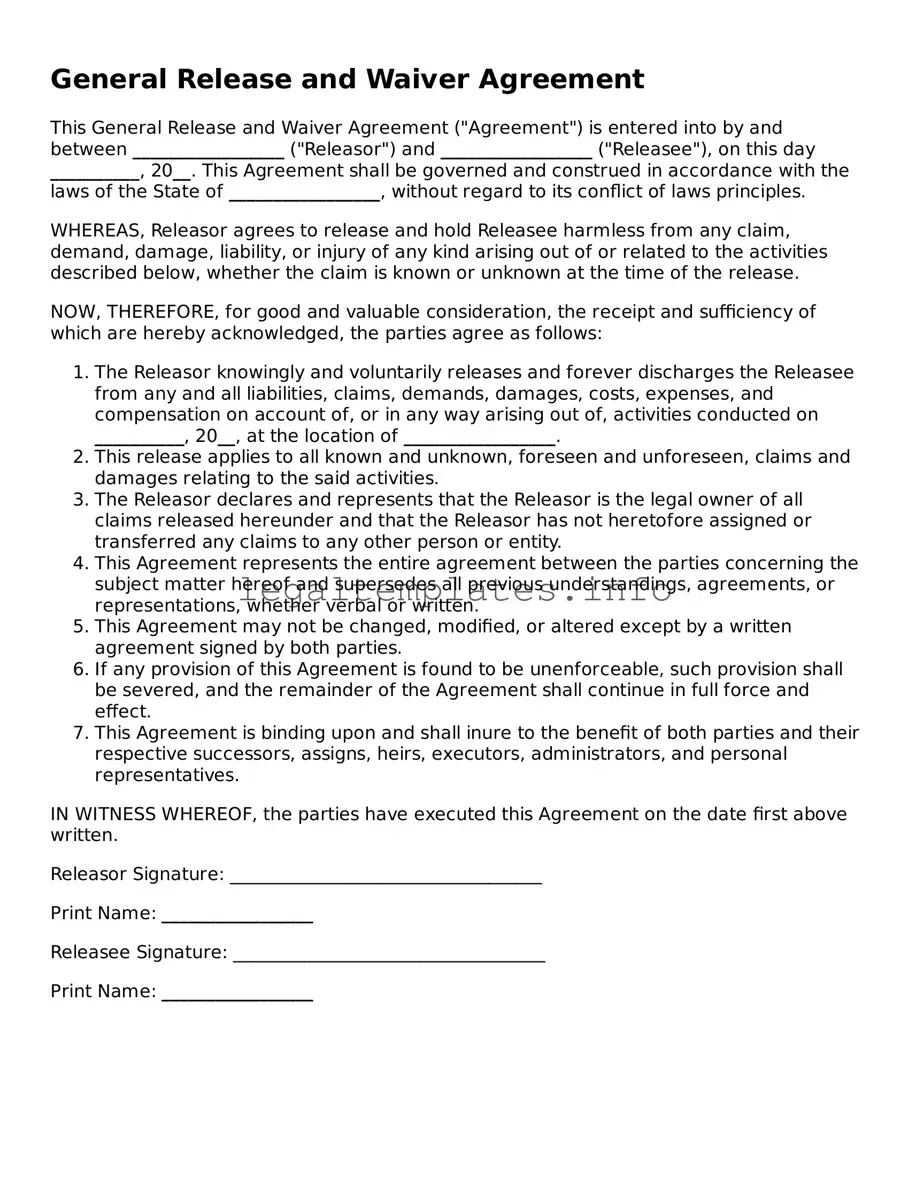General Release and Waiver Agreement
This General Release and Waiver Agreement ("Agreement") is entered into by and between _________________ ("Releasor") and _________________ ("Releasee"), on this day __________, 20__. This Agreement shall be governed and construed in accordance with the laws of the State of _________________, without regard to its conflict of laws principles.
WHEREAS, Releasor agrees to release and hold Releasee harmless from any claim, demand, damage, liability, or injury of any kind arising out of or related to the activities described below, whether the claim is known or unknown at the time of the release.
NOW, THEREFORE, for good and valuable consideration, the receipt and sufficiency of which are hereby acknowledged, the parties agree as follows:
- The Releasor knowingly and voluntarily releases and forever discharges the Releasee from any and all liabilities, claims, demands, damages, costs, expenses, and compensation on account of, or in any way arising out of, activities conducted on __________, 20__, at the location of _________________.
- This release applies to all known and unknown, foreseen and unforeseen, claims and damages relating to the said activities.
- The Releasor declares and represents that the Releasor is the legal owner of all claims released hereunder and that the Releasor has not heretofore assigned or transferred any claims to any other person or entity.
- This Agreement represents the entire agreement between the parties concerning the subject matter hereof and supersedes all previous understandings, agreements, or representations, whether verbal or written.
- This Agreement may not be changed, modified, or altered except by a written agreement signed by both parties.
- If any provision of this Agreement is found to be unenforceable, such provision shall be severed, and the remainder of the Agreement shall continue in full force and effect.
- This Agreement is binding upon and shall inure to the benefit of both parties and their respective successors, assigns, heirs, executors, administrators, and personal representatives.
IN WITNESS WHEREOF, the parties have executed this Agreement on the date first above written.
Releasor Signature: ___________________________________
Print Name: _________________
Releasee Signature: ___________________________________
Print Name: _________________
